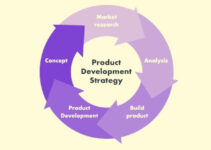Introduction
Warehousing is the main investment area of any business, and it defines a company’s growth and success. Therefore, it’s important to know the product storage and movement (in and out) of the goods. Today, we’ll discuss what is warehouse management; its types, various steps in the process, and benefits.
What is Warehouse Management?
Warehouse management is the process of controlling and optimizing product storage and other various operations in the warehouse. It starts as the inventory enters the storage facility and it ends until the product becomes sold, consumed, outdated, or transferred to some other facility.
The goal of warehousing management is to develop effective and efficient coordination among various processes and activities of the storage facility. It consists of planning all the operations and control procedures of the unit. However, when we say planning and controlling, then it means management of various activities in order to meet the needs and wants of customers.
Inventory vs. Warehouse Management
Inventory management is the process of managing the stock in the warehouse and maintaining stock-flow in the supply chain by fulfilling orders in the process. On the other hand, warehouse management is the management of the entire warehousing facility like storage, workforce, inventory, technology, and equipment. WM develops an environment for easy movement of the product/stock in the warehousing facility.
Components of Warehouse Management
Warehousing management may seem simple but it requires in-depth planning. Some of the main components that you should keep in mind while managing the facility are as follows;
Customer-Centric
Targeting customers and developing a customer-focused strategy isn’t only good for the marketing, but also equally good for the warehousing. Although customers won’t ask you how you should manage the stock and inventory, their purchasing choices would tell you what type of stock and inventory you should store. It would allow you immediately ship the product to their address, whenever they place an order.
Now, you have to maintain the balance of storing the right type of products/services whatever they want. If you spend time and resources managing your facility, then you fulfill customers’ orders on time without any delays.
Solids Control & Workflow
Implementation is more important and valid than just knowing how to perform. If you’re developing a strategy for your organization, then make sure for its proper execution. You should develop such a workflow where the workforce, rules, procedures, and protocols should be in alignment in order to achieve the common goals and objectives.
Changing Circumstances
Rules, protocols, and workflow are important for your business, but the change in strategy to the right direction on time is equally important. For instance, data analytics shows you the change in customer trends, and you change your workflow in the same direction. The workforce and the entire facility should have the capability to switch to the other plan.
Clear Path
You should make warehousing and business decisions based on statistical and analytical data. The data tells you the behavior and trends of the customer market, and you let the data decide your path. Therefore, you should keep your eyes on the latest customer data and trends, and do not let your emotions cloud your personal judgment.
Adapting Technology
We’re living in the fast-evolving world of technology. You should always be open to the latest technology like software, applications, robotic processes, or something else. Investment in technology would amplify the productivity and profitability of your organization.
Types of Warehouse Management
There are various types of warehouses for managing different sorts of products. Some of the main types of the warehouse are as follows;
Retail Warehouse
As the name implies, it deals with customer products. 1000 square meters of building space is sufficient for executing their operations. However, front and floor you can use it for sale and customer dealings, back are for official purposes and storage of the stock.
Cold Storage
It’s a type of facility for edible/non-edible products that are temperature sensitive. They allow you to control various indicators like microorganisms, warm, cold, and humidity in order to maintain the quality.
Fulfillment & Distribution Warehouse
It’s an intermediary type of facility where manufacturers temporarily store their products for further distribution to the retailers. They offer a very valuable service or a cushion to the supply chain. However, many e-commerce companies employ 3rd party warehouses in order to gain a cost-benefit.
Hazmat Warehouse
It’s a type of facility for storing physically and chemically dangerous products/substances like radioactive material. The organization makes special provisions for such substance/material storage because the leakage or carelessness could jeopardize the living beings in the surrounding areas.
Process of Warehouse Management
Some of the main steps involved in the process of warehouse management are as follows;
Receiving & Putting Away
It’s the stage where the warehousing facility receives the products/goods. It comprises of confirming the received order with the logistic partners in terms of usability, sensitivity, and quantity. However, it means cross-docking and offloading it properly.
Preparation
After receiving the order, the firm has to pick the order and fulfill other order requirements. Like packaging relevant to the product type, transportation at the packaging facility, shipping the product using the right delivery method, and offering the appropriate feedback. For smooth function, the firm has to work and integrate with the logistic partner.
- Picking Strategy: it means receiving the order from various points inside the storage facility
- Fulfilling Orders: it’s a small process, and some companies do it in three steps, the best option is to use the integrated warehousing management system
- Packing solution: bring the product items for packaging in order to make it ready for shipment, the place comprises of a big table where workers pack them,
- Shipping Station: it’s the final stage where the company delivers the product to the courier or shipment service providers
- Inventory control: it’s the process of tracking the stock in order to maximize and optimize the inventory, it plays a significant role and you can do so by the barcode scanner
Transferring Stock
When moving the stock/goods from one point to another inside the storage facility, then it requires proper documentation. Like mode of transfer, moving personal, and entering details in the inventory managing software/application.
Move Location
When it comes to transferring the warehousing to the new location, then it requires proper feasibility analysis relevant to the market conditions. It’s a pure business decision, and it requires data collection and then evaluation. However, the relocation requires developing a proper plan by including all the shareholders on the same page and defining their roles.
You should also have a backup plan or storage facility in case anything uncertain happens. Additionally, you should store the inventory in some other place in order to meet the demands of the new place isn’t ready on time.
Merchandise Return
As the name implies, it’s the stage that deals with returned products by customers or they couldn’t receive the order. It’s a systematic procedure where you check various indicators, and then accept the returned product of customers. For instance, if the product is defectively confirmed by the quality assurance department, and then return the product. It requires an unbiased judgment for repairing the damaged product or offering a new product.
Benefits of Warehouse Management
Some of the main benefits of warehousing management are as follows;
Proper Storage Spacing for Stock
There isn’t sufficient space for the warehouses, and the managers always face the challenge of maintaining the balance between the space and stock. Warehousing management allows you to develop such a layout (horizontally and vertically) that would utilize the space efficiently.
Best Usage of Workforce
Warehousing management helps you to make use of your workforce effectively. It makes sure that various stakeholders like packaging associates, equipment operators, material handlers, and receivers perform various operations responsibly.
Low Inventory Carrying Cost
Warehousing management helps you reduce the carrying cost of inventory by using various techniques. For instance, you speed up the order processing, then it impacts the speed of stock-flow by lowering the carrying cost and increasing the profitability.
High Profitable
The profitability and growth of your organization are dependent on how you’re managing your warehouses. Efficient management of warehouses helps you to lower various expenses and carrying costs.
Speedy Processes
Usage of latest technology at the warehouses like conveyer, forklift, inventory managing software, automation, robots, and other mechanical equipment; they improve accuracy, order processing speed, and various other operations.
Conclusion: What is Warehouse Management? Types, Process, Benefits
Today, we’ll discuss what is warehouse management; its types, process, benefits; we’ve realized that warehousing is a very significant part of various businesses. The requirements of warehousing vary from business to business, you should keep in mind the abovementioned guidelines for management.

Ahsan Ali Shaw is an accomplished Business Writer, Analyst, and Public Speaker. Other than that, he’s a fun loving person.


